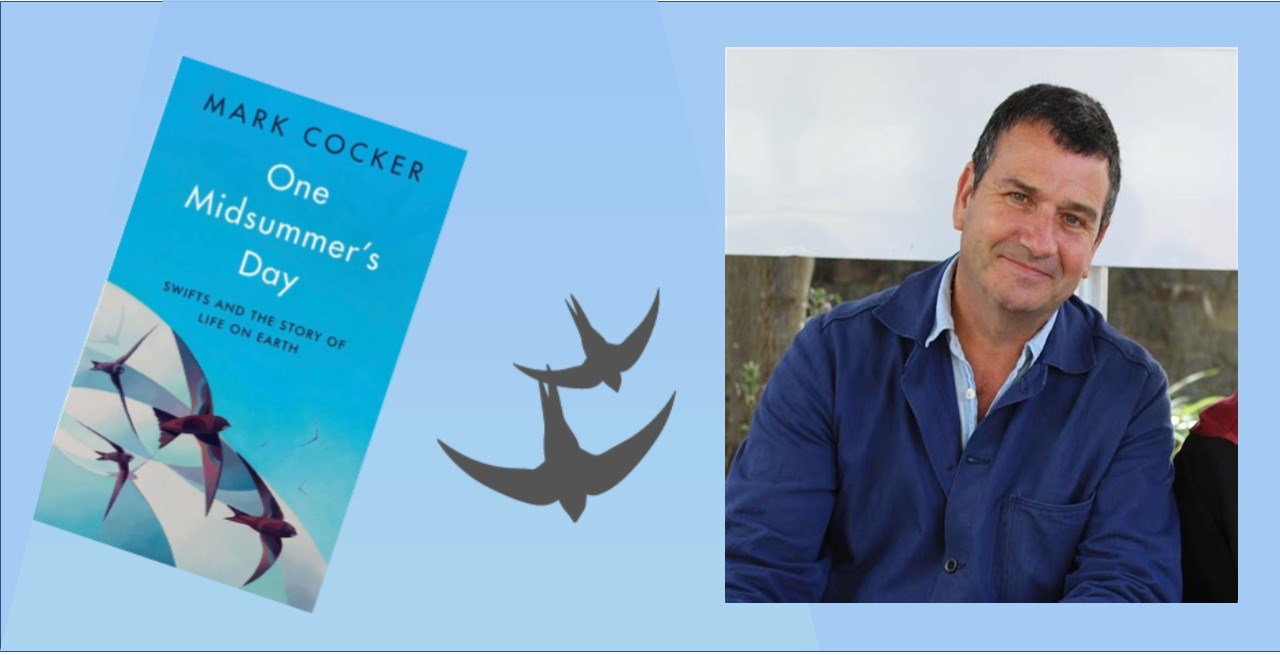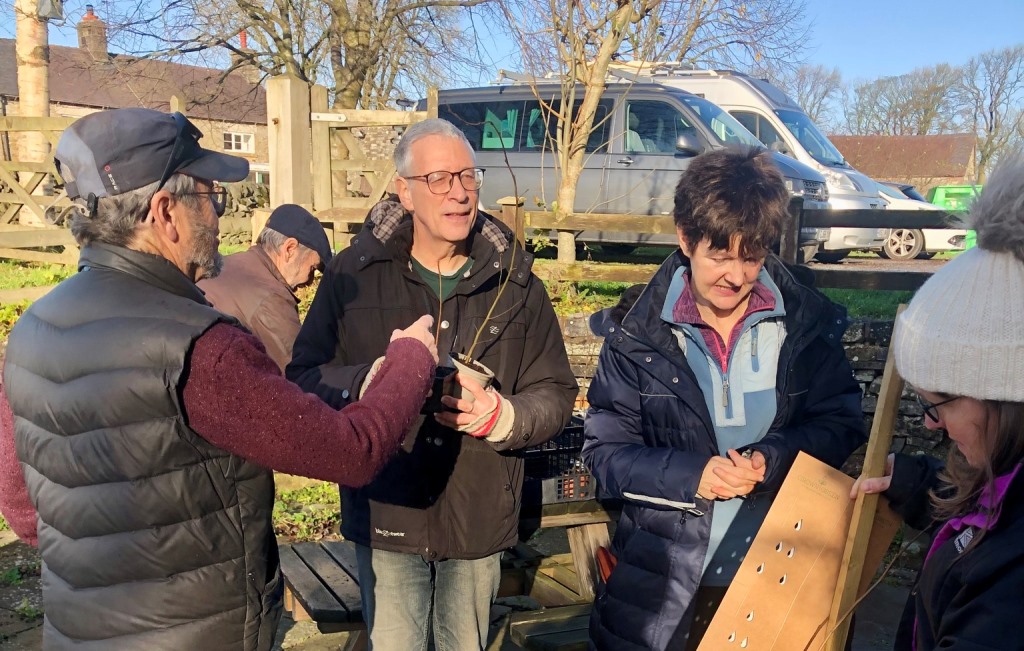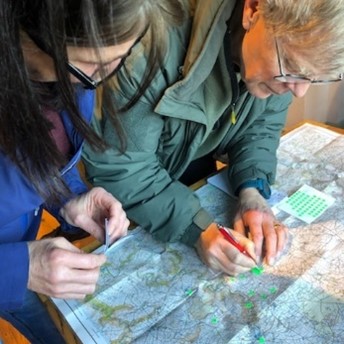 What a fabulous time we had at the Family Fun Day at Tittesworth! This was organised by Severn-Trent at their visitor centre, with wildlife and biodiversity a key focus.
What a fabulous time we had at the Family Fun Day at Tittesworth! This was organised by Severn-Trent at their visitor centre, with wildlife and biodiversity a key focus.
We met lots of fantastic people who love nature, who took part in our greenhouse gases game, guessed the number of worms in our compost jar and showed great expertise in creating bumblebee masks.
Roll on next year's event.
 Would you like to have a local Community Nature Trail? This is an idea being promoted by More Human, a nationwide community action group. The concept is to identify a route with significant areas or points of interest and then create a map of the trail. This could include trail stops and narrative details of things to see at the stops. These might be landmarks or significant planting or trees, etc. We would then produce a leaflet to be placed in venues such as the library, local community centres, shops, etc. Find Out More Here
Would you like to have a local Community Nature Trail? This is an idea being promoted by More Human, a nationwide community action group. The concept is to identify a route with significant areas or points of interest and then create a map of the trail. This could include trail stops and narrative details of things to see at the stops. These might be landmarks or significant planting or trees, etc. We would then produce a leaflet to be placed in venues such as the library, local community centres, shops, etc. Find Out More Here
We will be discussing this (and much more!) at the next Nature meeting on 14th August. If you have ideas for a possible trail, please join us at the meeting.
 Swifts typically arrive in Early May. Tell us when and where you saw your first Swift this summer. If you write just a few words about what this meant to you, you could win a copy of this new book signed and presented to you by nationally-acclaimed author Mark Cocker. Please send your words and sighting by 30 June to
Swifts typically arrive in Early May. Tell us when and where you saw your first Swift this summer. If you write just a few words about what this meant to you, you could win a copy of this new book signed and presented to you by nationally-acclaimed author Mark Cocker. Please send your words and sighting by 30 June to
A Summer Evening with Mark Cocker
Moorlands Climate Action welcomes author Mark Cocker back to the Foxlowe Arts Centre on Wednesday 12 July. A truly inspiring speaker, Mark will take to the stage at 7.30pm to discuss his latest book One Midsummer's Day - Swifts and the Story of Life on Earth with MCA's own Mark Johnson. Tickets are free and available at Eventbrite.
This competition and talk form part of a multi-year programme to build on the work of Swifts of Leek in bringing back this beautiful but threatened bird in the numbers once seen in the skies above Leek. This includes new swift boxes and recording sightings on the RSPB Swift Map.
 This project originated from a discussion on climate change with Butterton Parish Council and led to MCA members Hannah Grimsey and Wendy Bohme initiating and running the Manifold Tree Planting project. They were aware that there are tree planting opportunities for those who have large areas of land, but that there are many people in the Manifold Valley who are not land-owners, but who would like to plant trees in their own gardens or smaller areas of land. The project aims to bring these people together, moving action from the individual to the community.
This project originated from a discussion on climate change with Butterton Parish Council and led to MCA members Hannah Grimsey and Wendy Bohme initiating and running the Manifold Tree Planting project. They were aware that there are tree planting opportunities for those who have large areas of land, but that there are many people in the Manifold Valley who are not land-owners, but who would like to plant trees in their own gardens or smaller areas of land. The project aims to bring these people together, moving action from the individual to the community.
 An emphasis on planting “the right tree in the right place” and helping people decide which native trees to plant, where they would have the most beneficial climate and biodiversity impacts, was central to the project. Funding was received from Staffordshire Moorlands District Council Community Climate and Nature Action...
An emphasis on planting “the right tree in the right place” and helping people decide which native trees to plant, where they would have the most beneficial climate and biodiversity impacts, was central to the project. Funding was received from Staffordshire Moorlands District Council Community Climate and Nature Action...
 The question ‘What have soils ever done for us?’ brings lots of replies: the provision of food, fibre and fuel, a source for pharmaceuticals, water purification, flood and climate regulation to name but a few. Although we understand the need for fertility, light, water, etc, we tend to regard soil as just the medium we pop our plants into, rather than a treasure trove. However, scientific research in recent years has revealed how rich, complex and full of life it really is.
The question ‘What have soils ever done for us?’ brings lots of replies: the provision of food, fibre and fuel, a source for pharmaceuticals, water purification, flood and climate regulation to name but a few. Although we understand the need for fertility, light, water, etc, we tend to regard soil as just the medium we pop our plants into, rather than a treasure trove. However, scientific research in recent years has revealed how rich, complex and full of life it really is.
“Soil is an incredible, vital, and undervalued resource. It takes up to 400 years to make one centimetre’s depth of soil. One teaspoon of soil contains more living things than people on Earth.” Royal Society.
Sadly, the research also reveals that soils have been in decline for a very long time, in reality since humans took up the plough. Moreover, soil loss rates have speeded up dramatically since the adoption of much more intensive farming methods and governments are now concerned to address the problem with regenerative farming approaches...

Our readers probably know already that beavers have returned to both Cheshire and Derbyshire and are thriving in the habitats designated for them by their respective Wildlife Trusts. Even better news is that, since 1st October 2022, they have been officially designated as native AND protected species in England as well as Scotland.
The best news of all is that a beaver has recently appeared in the Churnet valley, having made a freedom bid from his East Midlands base and travelled independently up the catchment via the Trent and the Dove. The Staffordshire Wildlife Trust staff who found him christened him ‘Brian’ but were sorry to hear that his incautious behaviour had led to him being recaptured and returned to his ‘transit camp’. An enchanting creature, who doesn’t eat fish, improves the habitat and prevents downstream flooding, he and his fellows will be very welcome when they are allowed to return officially...
- Leek Wild Week
- Kiss The Ground
- Nature and Landscape Recovery in England
- A Rough Guide to Using Leaves for Leaf Mould instead of Peat
- Brough Park - Long Read
- Nature News
- Going All Poldark
- Bee-friendly Project with Leek Town Council
- Oak Fostering Scheme
- Nature News
- Care about bees? How about having a wild hive for them?
- Green Manure Plants and Cover Crops
